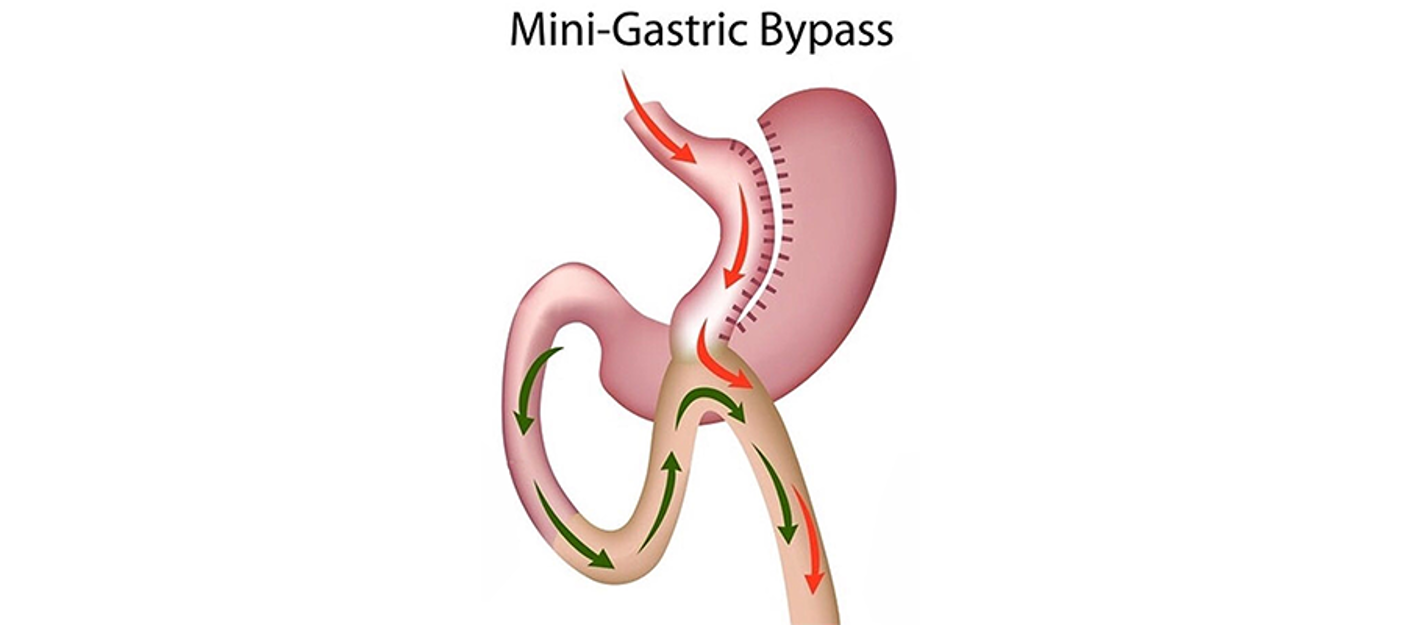Mini gastric bypass a modification of loop gastric bypass and technically easier application than a roux-en-y gastric bypass is a laparoscopic surgery. Mini gastric bypass is a simple and safe method; its application has become widespread around the world, it can be easily revised or reversed.
In Mini gastric bypass, upper part of the stomach is sectioned into a smaller piece. Further, the stomach is sectioned up to His angle (angulation between esophagus and stomach that prevents reflux), creating a poach. The Treitz ligament is then identified and the small bowel is counted until 200 cm from the Treitz angle, determining the exclusion of part of the stomach, duodenum, and proximal jejunum from the food pathway. Finally the poach is anastomosed to this segment.
Mini gastric bypass is combination of both restrictive and malabsorptive weight loss methods. Even though it is not studied on extensively, there are possible hormonal changes that regulates insulin sensitivity and reduce hunger. Mini gastric bypass is not globally recognized as a metabolic and bariatric method because of its high levels of alkaline bile reflux and limited data on effective long-term outcomes.
In 18 months, 95% of patients had more than 50% weight loss. The highest weight loss rate was 82%

